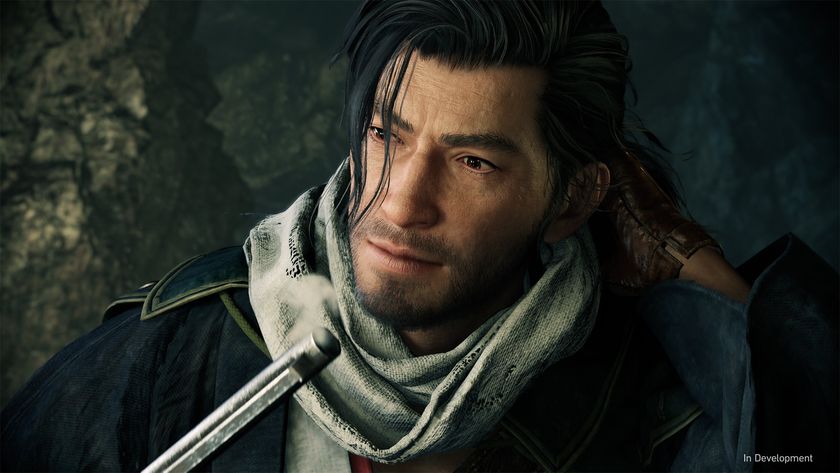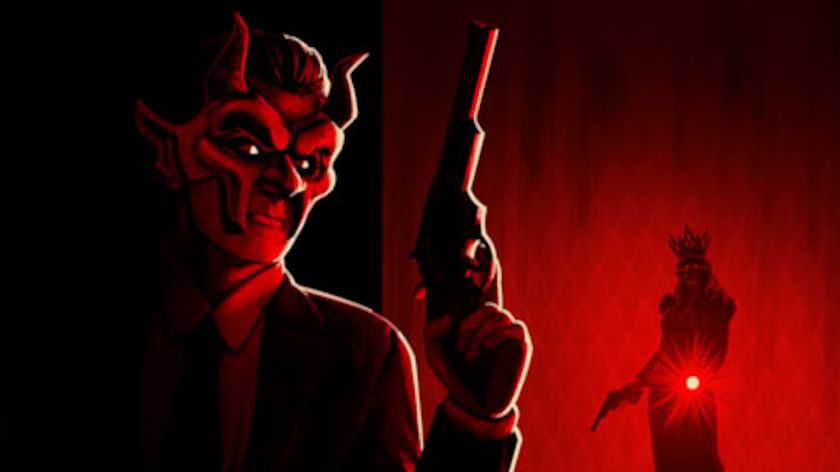Tim Schafer on the making of Full Throttle
How Mad Max, Yojimbo and Hellboy influenced the creation of a classic.

This article was originally published in PC Gamer issue 306. For more quality articles about all things PC gaming, you can subscribe now in the UK and the US.
In 1995 LucasArts released Full Throttle, a point-and-click adventure with a difference. You weren’t playing as a lovable goofball like Bernard Bernoulli from Day of the Tentacle or Monkey Island’s Guybrush Threepwood, you were a tough, gruff biker called Ben who used his fists and feet as much as his brain.
At the time a LucasArts adventure was expected to sell around 100,000 copies, but Full Throttle sold over a million. And now, 22 years later, the game has been re-released with remastered graphics and audio. I ask the game’s writer/director Tim Schafer what it’s like going back to something he made when he was in his early 20s.
“It’s been interesting looking at how I wrote dialogue back then based on my life experiences at the time, and how I interpret it differently now that I’m older,” he says. “And now that I’ve actually been a biker on the run for a crime I didn’t commit, that adds a lot of depth to it too. I had no idea what that was like back then.”
Full Throttle was a huge leap from Day of the Tentacle, with fullscreen animation, 3D models, and lavish production values. “We got a lot more ambitious,” says Schafer. “We had all these kinetic, cinematic chase scenes with 3D vehicles, and that scope really hit us hard when we realised how much time it would take to make. We tried cutting some stuff, but it was still a huge, expensive project.”

George Lucas and ILM weren’t making B-movies, so we couldn’t make B-games. We had this idea that we had to be the best and that was something George made clear in his directives to LucasArts.
Tim Schafer
But he still has fond memories of working on the game, particularly how encouraging LucasArts was. “We got the support we needed to make the game great,” he says. “Quality was always the number one thing there, and that came from the top. George Lucas and ILM weren’t making B-movies, so we couldn’t make B-games. We had this idea that we had to be the best and that was something George made clear in his directives to LucasArts.”
Even though Full Throttle isn’t set in a post-apocalyptic world, it has a desolate, hopeless quality usually found in that kind of fiction. “We were definitely inspired by Mad Max, but not in the sense that the world’s a wasteland. It was mainly the stoicism of Max as this tough guy hero. He’s capable and smart, but calm and quiet too. He’s not looking for trouble, but it always finds him.”
The biggest gaming news, reviews and hardware deals
Keep up to date with the most important stories and the best deals, as picked by the PC Gamer team.
The Mad Max influence also extends to the direction of the cutscenes. “Strapping the camera to these outrageous vehicles, low to the ground, making everything feel super fast.” And the game’s memorable intro sequence, which begins with a shot of an empty road and a melancholy narration, was a tribute to the beginning of Mad Max 2, as well as biker film The Wild One.
The Akira Kurosawa film Yojimbo was another cinematic inspiration, both for Ben and the general tone of the game. “Toshiro Mifune’s character is an out-of-work samurai just looking to get by, and he keeps getting stuck in the middle of these warring clans and other situations that force him to reluctantly unsheathe his sword.”
Artistically, Full Throttle still holds up. Longtime Schafer collaborator Peter Chan, who was also responsible for some of the most memorable visuals in Grim Fandango, was the lead artist. “We loved making Day of the Tentacle look like a Chuck Jones cartoon, but a lot of people thought it was too childish,” says Schafer. “So with Throttle we wondered if we could do cartoony, but for adults.”

Chan looked to Mike Mignola’s Hellboy comics for inspiration. “His backgrounds are really minimal, with a lot of silhouettes and dark spaces that draw your eye to the characters and the focal point of the scene,” says Schafer. “He was definitely one of the biggest influences on the look of the game.”
Full Throttle is also unique in the sense that there’s no great, looming threat the hero has to deal with. It’s a small, personal story about a fading way of life. “It’s so tempting when writing a story to have the world be in danger,” says Schafer. “It’s a workable plot device. But biker culture’s kind of nihilistic, so I thought about what would end the world of a biker. And that would be if the only maker of motorcycles in the country switched over to making hovering minivans. It would be such an affront to everything they believe in.”
The voice acting of the late Roy Conrad is part of what makes Ben such a memorable and beloved character, and I ask Schafer what he remembers about casting him. “We had all these audition tapes, and a lot of people were playing Ben as this over-the-top tough guy,” he says. “But Roy didn’t. He was stoic, stern, and had this quality of a guy who just wants to be left alone. He’s almost gentle, but he has this rich, deep, resonance to his voice.”
And the music by biker band The Gone Jackals, particularly the theme song, Legacy, is another important part of the game’s magic. “Keith Karloff, the band’s founder and frontman, rode up on his Harley and handed the tapes to composer Peter McConnell, and that was it. He knew the culture, he knew the sound, and he knew a bunch of biker guys. We’d meet his friends and tape microphones to their motorcycles and ride them around town.”

Full Throttle also saw a shift from the old ‘wall of verbs’ interface that was seen in the likes of Day of the Tentacle to something much more streamlined and visual. I ask Schafer about the thinking behind this. “We wanted to have more real estate for the presentation,” he begins. “The artists wanted to fill the screen with art. Also, looking up and down constantly distracts from your immersion. So we thought: why can’t the verbs just appear right where your cursor is? Because that’s where your eye is. And that’s where the idea came from.” Schafer notes that when The Curse of Monkey Island used the same interface later, the development team used a coin, and now people refer to it as a verb coin. “That’s wrong!” he laughs. “It’s a verb skull!”
As for remastering Full Throttle for a new generation, Schafer says he wants to remain true to the original game. “It’s a collaboration of a bunch of artists coming together. The acting, the writing, the sound design, the music. All these people worked together to make this thing, and we don’t want to mess with it. We just want to present it in the best way possible, and make it more true to the original intentions. We’re getting rid of artefacts, compression, and old tech to make it look like it looked in our minds.”
If it’s set in space, Andy will probably write about it. He loves sci-fi, adventure games, taking screenshots, Twin Peaks, weird sims, Alien: Isolation, and anything with a good story.

















